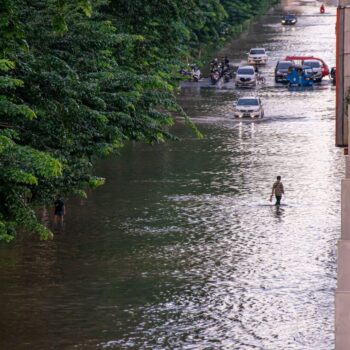We can’t prepare for every scenario or crisis that might befall us in the future. So, whether as individuals or institutions, we constantly consider the range of risks we face and make decisions based on imperfect information.
Health experts have issued warnings about pandemics for decades – as have high profile public figures like Bill Gates in recent years. We knew this was coming.
Governments were unprepared for COVID-19 because in any given year the likelihood of a pandemic is small, and easy to ignore. We are now seeing the impact of unlikely events, both in human suffering and economic terms, can be enormous.
Unfortunately, the need to respond and recover from this pandemic does not absolve us from the need to manage other risks, whether cyber, nuclear, or climate.Crisis response to the pandemic is rightly monopolising the attention of most governments and businesses and will do so for months to come.
As COVID-19 heads into the summer, it may interact with the active hurricane season in the Atlantic that experts are predicting for 2020. This is due to unusually warm water temperatures, including a 70% chance of at least one major hurricane making landfall in the United States. This raises the chance of something akin to Hurricane Harvey or Typhoon Haiyan making landfall just as cases of the virus are peaking and health sector and disaster response capacity is already stretched beyond its limits.
The coming weeks and months will be characterised by deep uncertainty. But there are two things that we can say for sure: first, a tremendous amount of money is going to be spent on responding to and recovering from COVID-19. Second, not a single country, institution or corporation is currently managing climate risk well enough.
Governments must not let the urgency for recovery from the pandemic let even more risk build into the system.
There’s a meme circulating on social media that climate change needs coronavirus’ publicist. As we are already seeing with the pandemic, there will be second and third order impacts from climate change that will be difficult to predict but easy to imagine. Disaster response to weather events will stretch fiscal policies, threaten public services and possibly lower sovereign credit ratings. Growing food and water insecurity are likely to lead to social unrest in some parts of the world. Instability in the financial system from both climate policy implementation and physical impacts will affect pensions and dividends. Disruption of supply chains or entire industries will lead to job losses and political upheaval.
There is a chance to use this moment to think more deeply and consciously about resilience – with respect to global governance, infrastructure investment, and the social contract between governments and their citizens. Resilience as a concept was attracting more attention even before COVID-19 and has only grown in importance over the past several weeks. As difficult as it may be, there are three things that decision makers should be thinking about when making choices about how to rebuild.
First, recovery packages and investments should be stress tested against a full range of potential climate (and other resilience) scenarios. Governments can choose not to invest in preparing for the worst – but that choice should be well informed, not based on ignorance of the full range of possible outcomes.
Second, the international community, including the UN as well as bodies like the G20, should prioritise institutional reforms needed for 21st century challenges. The World Health Organization’s role in the unfolding situation highlights the necessity of trust-based international institutions and cooperation. Our institutions – be they national or international, financial, development or economic – were not designed to deal with climate risk. But deal with it they must. Let’s make them fit for purpose. Institutional reform is the guardrail between a rules-based multilateral system and a world of purely power-based geopolitics.
Third, investments made as part of recovery efforts should be based on building economic and social resilience, not just on efficiency or growth. This won’t happen organically – it is a choice that governments will need to make. And growth alone won’t result in an ability to manage critical risks, as we have seen first-hand over the past few months.
Our response to this pandemic can result in stronger social safety and more resilient economies. In solving this crisis, we must not make the next one worse.
Shelter-in-place orders may limit the spread of this pandemic. There is no such measure with climate change, but we already have the tools we need to make low carbon, resilient economies a reality. We just need the institutional reforms that will allow us to use them.



